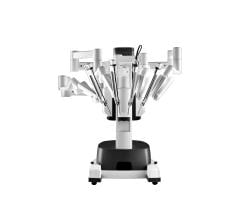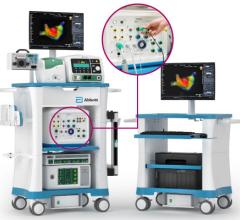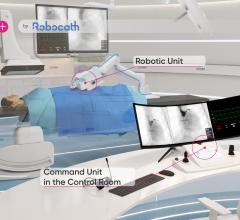
The start-up company Corindus for several years has been developing a robotic-assist system for use in the cardiac cath lab. It not only navigates devices to target lesions, but also can be used to precisely guide, manipulate and deploy devices during interventional procedures. The system allows the operator to sit in a lead-shielded booth in the cath lab to perform procedures away from the table and outside of the radiation field. Operators work while sitting down, without lead aprons and with more precision than allowed with hand manipulation.
At Transcatheter Cardiovascular Therapeutics (TCT) 2010, there was a lot of interest by attendees in the system. Diagnostic and Interventional Cardiology Editorial Advisory Board members who attended TCT ranked it among the top technologies to pay attention to. They said it offers a promise of a safer working environment for physicians, better precision, and the elimination of back pain and fatigue because the operator no longer needs to wear heavy lead protective aprons.
This system did not escape notice by the large angiography system/cath lab install companies. In fact, Philips Healthcare jumped at the opportunity to work with Corindus and announced April 21, 2011 an agreement to add CorPath to Philips’ interventional cardiology solutions. As part of the agreement, Philips has also acquired a minority stake in Corindus.
This partnership and financial stake in Corindus shows a big vote of confidence in the technology, since CorPath just began its U.S. Food and Drug Administration pivotal trial in March and is not yet approved for clinical use in the United States.
Philips, GE, Toshiba and Siemens all offer top-of-the-line angiography systems and entire cath lab installation packages. Each makes strides each year to improve their products and stay ahead of the competition. I believe this step to partner with and take a financial stake in Corindus will be a major step forward for Philips. In addition, Philips purchased other technologies in the past two years to aid cath lab navigation imaging and advance fusion imaging techniques.
The future seems bright for robotic systems in the cath lab. The stage has already been set on the surgical side of the cardiovascular department, where the da Vinci robotic surgical assistance system has made major in-roads for its ability for better precision, decreasing surgeon fatigue and enabling greater patient throughput.
I would be interested in hearing your views on the use of robotic systems in the cath lab. You can e-mail me at dfornell@sgcmail.com.

 June 11, 2024
June 11, 2024 








